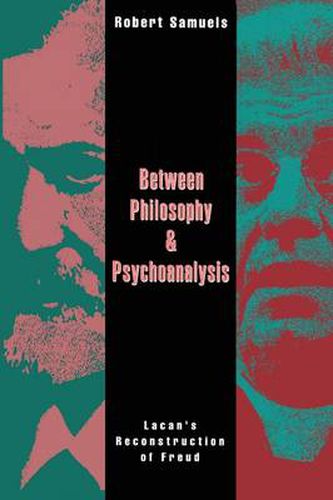Readings Newsletter
Become a Readings Member to make your shopping experience even easier.
Sign in or sign up for free!
You’re not far away from qualifying for FREE standard shipping within Australia
You’ve qualified for FREE standard shipping within Australia
The cart is loading…






By using the concepts developed by Lacan to analyse the inner logic of Freud’s thought, Robert Samuels provides a bridge between Lacanian theory and traditional categories of psychoanalytic theory and practice. In Between Philosophy and Psychoanalysis he constructs a stucture of subjectivity that accounts for the three major types of psychopathology - psychosis, neurosis and perversion - in terms of the different way each type tries to avoid the imposition of social imperatives. While these three dimensions, which Samuels names the existential, the phenomenological and the structural, were never developed to a significant degree by Freud himself, the author demonstrates that they underlie Freud’s thinking. Moreover, by articulating these three dimensions in terms of the three registers of subjectivity formulated by Lacan - the real, the imaginary and the symbolic - Samuels demonstrates the way in which Lacan’s work is a return to Freud. Samuels argues that Freud’s work offers a response to many questions that have dominated Western philosophy and that, with Lacan, Freud’s philosophical presuppositions and solutions become more evident. By turning to philosophy to explain psychoanalysis, Lacan was able to break down some of the differences between these two disciplines in France, and this book is intended to extend the dialogue between psychoanalysts and philosophers internationally.
$9.00 standard shipping within Australia
FREE standard shipping within Australia for orders over $100.00
Express & International shipping calculated at checkout
By using the concepts developed by Lacan to analyse the inner logic of Freud’s thought, Robert Samuels provides a bridge between Lacanian theory and traditional categories of psychoanalytic theory and practice. In Between Philosophy and Psychoanalysis he constructs a stucture of subjectivity that accounts for the three major types of psychopathology - psychosis, neurosis and perversion - in terms of the different way each type tries to avoid the imposition of social imperatives. While these three dimensions, which Samuels names the existential, the phenomenological and the structural, were never developed to a significant degree by Freud himself, the author demonstrates that they underlie Freud’s thinking. Moreover, by articulating these three dimensions in terms of the three registers of subjectivity formulated by Lacan - the real, the imaginary and the symbolic - Samuels demonstrates the way in which Lacan’s work is a return to Freud. Samuels argues that Freud’s work offers a response to many questions that have dominated Western philosophy and that, with Lacan, Freud’s philosophical presuppositions and solutions become more evident. By turning to philosophy to explain psychoanalysis, Lacan was able to break down some of the differences between these two disciplines in France, and this book is intended to extend the dialogue between psychoanalysts and philosophers internationally.